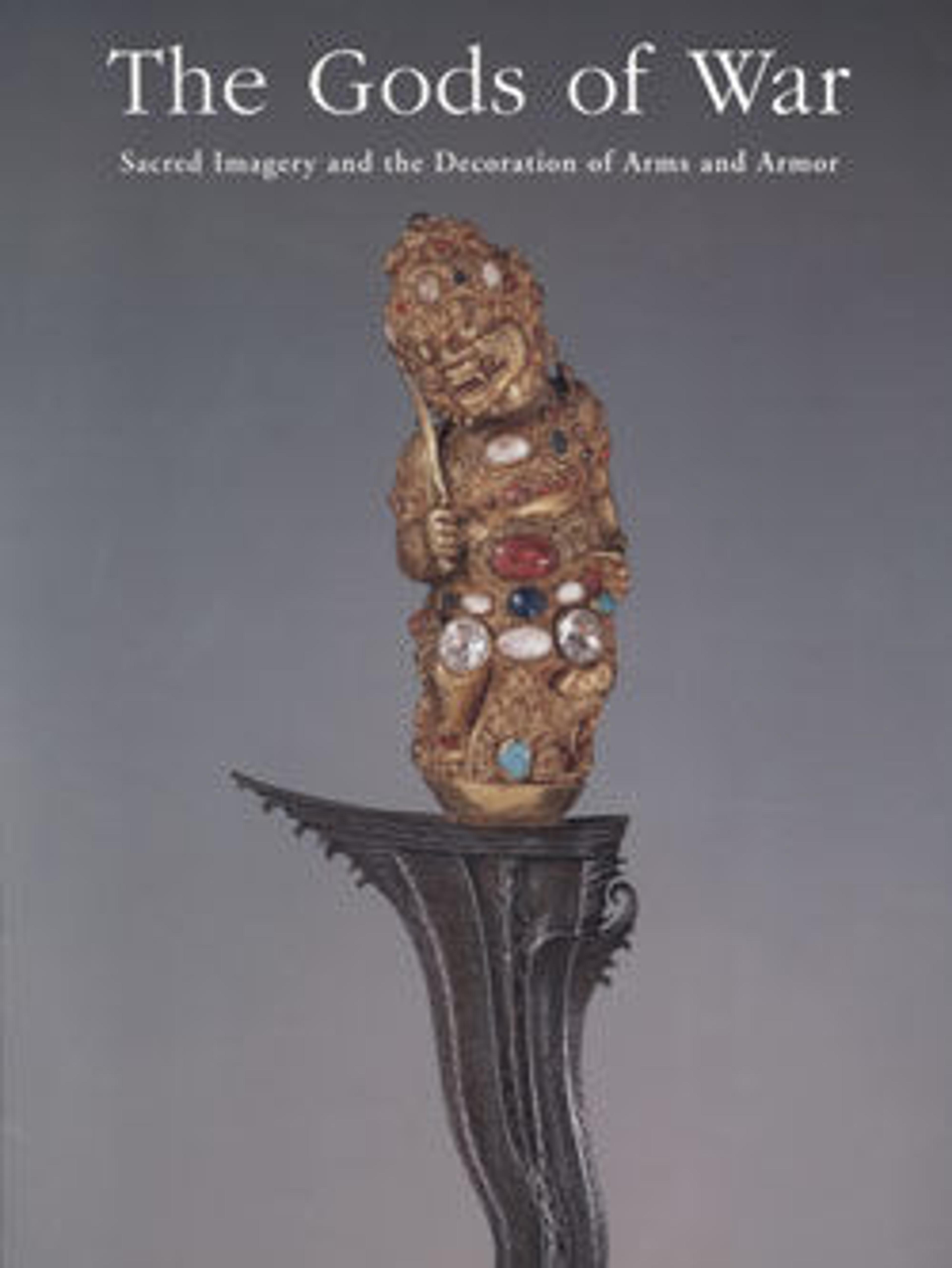Dagger (Katar)
The katar is a unique form of Indian dagger, in which the grip is perpendicular to the blade. it was wielded in the right hand, as an independent weapon, or in the left hand, in conjunction with a round shield. Two narrow upright flanges, often bearing fine ornamentation, protect the sides of the hand and wrist. Within the limited confines of these flanges the decoration of this katar depicts one of the most expansive areas of the Hindu pantheon: the ten incarnations (avatāras) of Vishnu.
Vishnu as the universal savior is one element of Hunduism's trimūrti (supreme triune deity), which also encompasses Brahmā as the creator and Shiva as the destroyer. In order to sustain mankind or defeat a great evil, Vishnu periodically manifested himself on earth in physical form, or avatar. The number of Vishnu's avatars has evolved over time, but one of the more widely accepted groups comprises the ten avatars represented on this katar. Here the avatars are displayed in two vertical rows, with five shown on each of the upright handguards, in the order in which they are said to have appeared on earth through the ages. From top to bottom they are: 1. Matsya (the Fish), 2. Kūrma (the Tortoise), 3. Varāha (the Boar), 4. Narasimha (the Lion), 5. Vāmana (the Dwarf), 6. Parashurāma (Rāma with the ax), 7. Rāmachandra (or Balarāma, brother of Krishna), 8. Krishna, 9. Buddha, and 10. Kalkin (the Horse or Mounted Warrior), who is yet to come.
The first four avatars, with animal attributes, may represent the early incorporation of indegenous folk deities into the Hindu religion through their association with Vishnu. Similarly, the inclusion of Buddha, as the ninth avatar, represents a response to the rise of Buddhism, which coexisted with Hinduism in India for over a thousand years. The tenth avatar, Kalkin, is expected to come with fire and sword at the end of the present age, when civilization will have reached its nadir. Vishnu, in this guise, will purge the earth of evil and prepare the way for a new beginning.
Vishnu as the universal savior is one element of Hunduism's trimūrti (supreme triune deity), which also encompasses Brahmā as the creator and Shiva as the destroyer. In order to sustain mankind or defeat a great evil, Vishnu periodically manifested himself on earth in physical form, or avatar. The number of Vishnu's avatars has evolved over time, but one of the more widely accepted groups comprises the ten avatars represented on this katar. Here the avatars are displayed in two vertical rows, with five shown on each of the upright handguards, in the order in which they are said to have appeared on earth through the ages. From top to bottom they are: 1. Matsya (the Fish), 2. Kūrma (the Tortoise), 3. Varāha (the Boar), 4. Narasimha (the Lion), 5. Vāmana (the Dwarf), 6. Parashurāma (Rāma with the ax), 7. Rāmachandra (or Balarāma, brother of Krishna), 8. Krishna, 9. Buddha, and 10. Kalkin (the Horse or Mounted Warrior), who is yet to come.
The first four avatars, with animal attributes, may represent the early incorporation of indegenous folk deities into the Hindu religion through their association with Vishnu. Similarly, the inclusion of Buddha, as the ninth avatar, represents a response to the rise of Buddhism, which coexisted with Hinduism in India for over a thousand years. The tenth avatar, Kalkin, is expected to come with fire and sword at the end of the present age, when civilization will have reached its nadir. Vishnu, in this guise, will purge the earth of evil and prepare the way for a new beginning.
Artwork Details
- Title: Dagger (Katar)
- Date: 17th–18th century
- Culture: South Indian; blade, European
- Medium: Steel, silver
- Dimensions: L. 17 3/4 in. (45.1 cm); W. 3 5/16 in. (8.4 cm); Wt. 1 lb. 4.6 oz. (584 g)
- Classification: Daggers
- Credit Line: Bequest of George C. Stone, 1935
- Object Number: 36.25.949
- Curatorial Department: Arms and Armor
More Artwork
Research Resources
The Met provides unparalleled resources for research and welcomes an international community of students and scholars. The Met's Open Access API is where creators and researchers can connect to the The Met collection. Open Access data and public domain images are available for unrestricted commercial and noncommercial use without permission or fee.
To request images under copyright and other restrictions, please use this Image Request form.
Feedback
We continue to research and examine historical and cultural context for objects in The Met collection. If you have comments or questions about this object record, please complete and submit this form. The Museum looks forward to receiving your comments.
